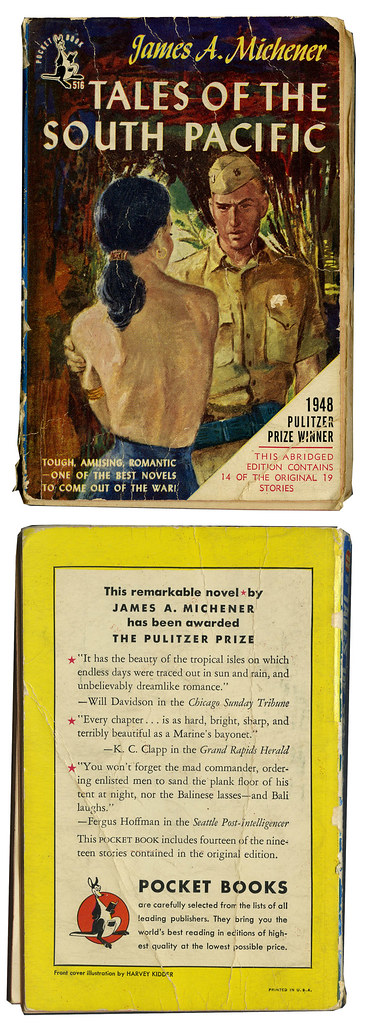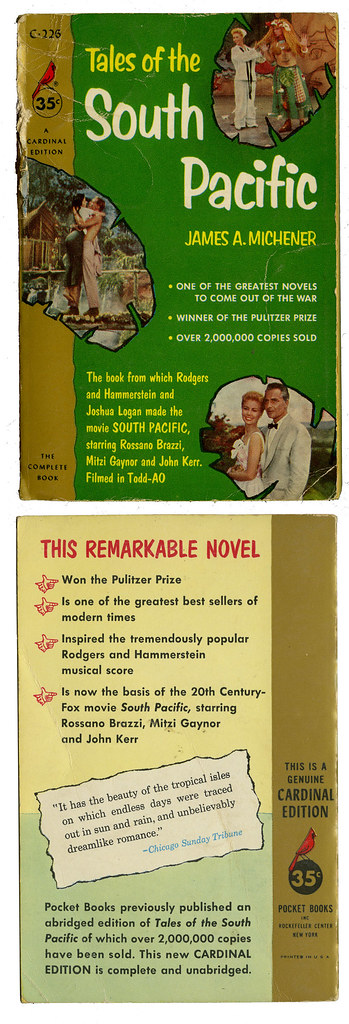This past weekend Run Silent, Run Deep was on TCM. I haven't seen the film in several years so I recorded it. There's something about submarine movies, and this one is great. Do like submarine movies. Das Boat is probably my favorite.
The book by Commander Edward L. Beach Jr. was published in 1955. The film, starring Clark Gable and Burt Lancaster was released in 1958 through Lancaster's production company. This movie tie-in paperback was published in 1958.
Beach's bestselling novel of submarine warfare begins soon before the attack on Pearl Harbor. The story is ostensibly the transcription of a Navy tape recording, as related by Commander Edward J. Richardson for use in a war bond drive, of events resulting in his award of the Medal of Honor.
The captain of an old submarine used for training at New London, Connecticut, Richardson and his crew are assigned to fit out and commission a new submarine, the USS Walrus, and take her to Pearl Harbor to destroy Japanese shipping in the Pacific Ocean. His executive officer and former best friend, Jim Bledsoe, is resentful because Richardson was forced to fail him during Bledsoe's qualification for comand after Bledsoe acted recklessly, nearly sinking their boat. Adding to the difficulties between them, Richardson is secretly enamoured of Bledsoe's fiancee, Laura Elwood, who despises him for ruining Bledsoe's chance. Laura and Jim wed just before Walrus departs New London.During their first war patrol in the Walrus, they encounter the Japanese destroyer Akikaze, whose skipper, Captain Tateo Nakame (nicknamed "Bungo Pete"), is responsible for a series of sinkings of several American submarines in the Bungo Suido, including the USS Nerka, which had been commanded by a close friend. Richardson, wounded in a subsequent encounter with Bungo, remains at Pearl Harbor while Bledsoe commands the Walrus for three war patrols. Bledsoe establishes a reputation for himself as an aggressive skipper with a good rate of sinkings. Between patrols, Bledsoe has an extramarital affair at Pearl Harbor, causing Richardson anguish for Laura's sake. During its next patrol, however, Walrus becomes Bungo Pete's seventh victim.During his stint ashore, Richardson works on solving reliability problems with American torpedoes. Richardson is given a new command, USS Eel, when her skipper comes down with tuberculosis. When the news of the loss of Bledsoe and the Walrus arrives, Richardson convinces his superiors to let him hunt Bungo Pete in the Eel. A great battle ensues in a raging storm between the Eel, fighting on the surface, and Bungo Pete's special anti-submarine warfare group, which consists of a Q-ship, a Japanese submarine, and the Akikaze. After sinking all three vessels, Richardson discovers three lifeboats in the vicinity and realizes that Bungo Pete and his skilled specialists will be rescued to resume their hunting. He intentionally rams the lifeboats.Soon after the destruction of Bungo Pete, the Eel is detailed to lifeguard duty off Guam, where Richardson's actions saving three aviators earns him the Medal of Honor. After the war he returns home, expressing his hope to begin a relationship with Laura Bledsoe.The novel was on The New York Times Book Review list for several months.Beach served on submarines in the Pacific Ocean during the war, and this adds to the realism of the story. He composed two sequels to Run Silent, Run Deep: Dust on the Sea (1972), a third person narrative detailing later patrols of the Eel, and Cold is the Sea (1978), about Richardson's later career in nuclear submarines. (SOURCE: Wikipedia)
To see the whole movie online click on the link shown below the video.
Watch Run Silent,Run Deep in Action & Adventure | View More Free Videos Online at Veoh.com
As a kid my Brownie Troop was invited aboard a sub at Pearl Harbor. Let's just say it was really tight inside, even for little girls used to playhouses. This was a wondrous playhouse, especially the torpedos. The cook had prepared a cake for us so we all gathered around for a piece at the tiny table with a big cake on it. Good times. Good times. Somewhere I have a photo of my troop standing on deck dressed in our little brown uniforms. I'm in the back row, neck stretched trying to see over the heads of the others. I was a scrawny kid.


















